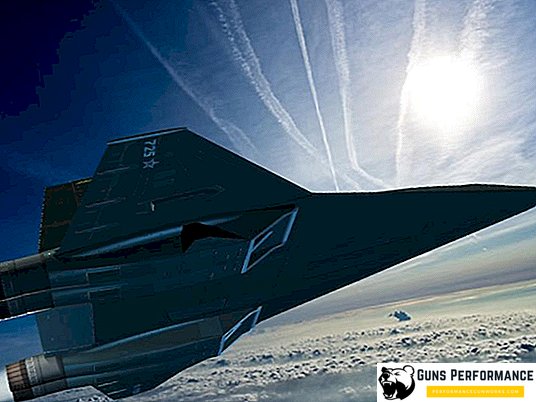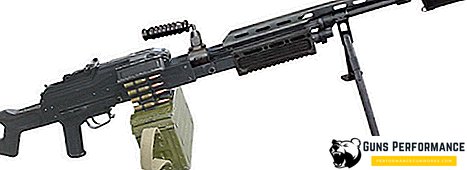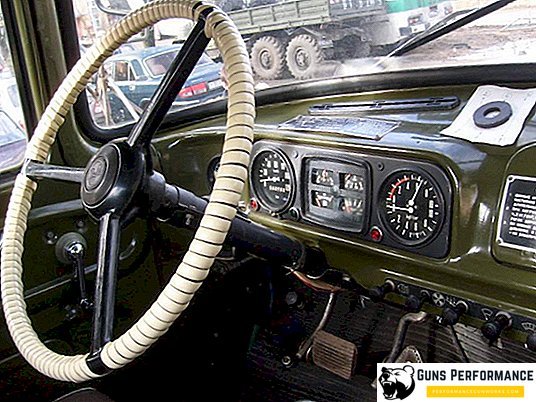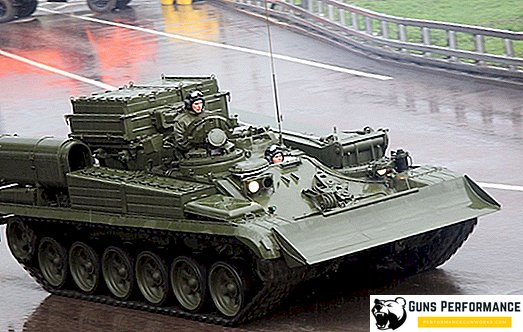
Currently, only two states in the world have a special kind of air force, which is called strategic aviation - Russia and the United States. Airplanes that are part of this kind of armed forces are capable of carrying nuclear weapons on board and attacking an enemy several thousand kilometers away. Strategic aviation has always been considered the elite of the American and Soviet (Russian) Air Forces.
Together with submarine rocket carriers and land-based intercontinental missiles, strategic aviation has formed the so-called nuclear triad, which for many decades has been the main instrument of global deterrence.
Despite the fact that the importance of strategic bombers has declined somewhat in recent decades, they continue to be an important factor in maintaining the foreign policy balance between the Russian Federation and the United States.
Currently, the list of tasks for which strategic aviation is involved is much wider. The times of nuclear confrontation have long since passed into oblivion, but new challenges have appeared in the world. Strategic aviation successfully masters conventional types of ammunition (including precision weapons). Both the United States and Russia are quite active in using long-range bombers to launch missile and bomb strikes in Syria.

Today, the basis of the strategic aviation of the United States and Russia is made up of airplanes, developed in the late 50s of the last century. A few years ago, work began on the creation of a new strategic bomber in the USA, which is planned to be put into service in 2025.
A similar program exists in Russia, the new “strategist” is still called PAK DA (a promising long-range aviation complex). Developed by KB them. Tupolev, plan to adopt a new machine by 2025. It should be emphasized that the PAK DA is not a project to modernize the current strategic bombers, but the development of a fundamentally new machine using the most modern technologies that exist today in the aircraft industry.
However, before proceeding to the consideration of the PAK DA, a few words should be said about the combat vehicles that are currently in service with the strategic aviation of Russia and the United States.

Strategic Aviation of Russia and the USA: Current State and Prospects
At present, the B-2 Spirit and B-52 bombers are part of US strategic aviation. There is another aircraft, the B-1B Lancer bomber, which was designed to carry out nuclear strikes at enemy territory, but in the mid-90s it was withdrawn from the US strategic forces. B-1B is considered an analogue of the Russian jet Tu-160, although it is inferior to the latter in size. According to the data provided by the US State Department on January 1 of this year, 12 B-2 aircraft and 73 B-52 aircraft of the N. modification are on combat duty.

Currently, the B-52 bomber, developed in the late 50s, is the basis of American strategic forces. This aircraft is armed with AGM-86B ALCM cruise missiles, on which a nuclear warhead can be installed. The range of their flight exceeds 2700 km.

B-2 Spirit is the most technologically advanced and most expensive aircraft in the world. Its value exceeds the fantastic $ 2 billion. The first bomber of this type was made in the late 80s, but after ten years the program was closed - such expenses were too heavy even for the United States. During this time, 21 B-2 aircraft were manufactured. The bomber is made using stealth technology and has the lowest ESR in the world. It is even lower than that of small "stealth" type F-22 and F-35. B-2 Spirit is armed only with free-fall bombs, so it is ineffective against the enemy with an advanced air defense system. For example, the Russian S-400 air defense missile systems perfectly “see” the B-2.
So the B-2 Spirit is a rather strange bomber. Despite the enormous cost, its effectiveness in a possible nuclear conflict is very ambiguous.

The B-1B Lancer is also unable to carry strategic cruise missiles. Rather, in the arsenal of the American army today there is no such weapon suitable for this aircraft. Currently, this bomber is used to strike conventional types of ammunition. Probably, it is possible to hang free-falling bombs with nuclear warheads on it, but this machine is unlikely to be able to penetrate deep into enemy territory with effective air defense.
Now about the prospects of American strategic aviation. At the end of 2018, Northrop Grumman, an aircraft manufacturer (it created B-2 Spirit), won a tender from the US Department of Defense for the construction of a new American “strategist”, which will be called B21. Work on this machine was carried out under the program LRS-B (Long-Range Strike Bomber), which translates as "long-range strike bomber." We already know how the new car will look like.

As well as the B-2 Spirit, it will be performed according to the "flying wing" scheme. The military requires that the new bomber become even less noticeable on radar screens, and its price is more acceptable to the US budget. The release of new bombers is planned to begin in the middle of the next decade. The US military is planning to buy one hundred new B21s and in the future to completely replace B-2 and B-52.
The new bomber will be able to fly both under the control of the crew and in the drone mode.
The total cost of the program is 80 billion dollars.
At present, the Russian Air Force has two vehicles: the Tu-95 (MS modification) and the Tu-160 White Swan.

The most massive strategic bomber of the Russian Air Force is the turbo-prop T-95 Medved, whose first flight took place during the life of Joseph Stalin (1952). However, it should be noted that the aircraft that are operated today belong to the modification "M" and were manufactured in the 80s. So most of the T-95 is even younger than the American B-52 bombers. Moreover, in recent years, the modernization of these machines has begun before the modification of the "MSM" (35 aircraft will be redone), which will equip them with the latest X-101/102 cruise missiles.
However, the non-modernized "Bear" can carry the KR X-55SM with a range of 3.5 thousand km with the possibility of installing a nuclear warhead on them. The new Kh-101/102 missiles will be able to fly up to 5.5 thousand km. Today, the Russian army has 62 Tu-95 units.

The second machine, which is currently operated by the Russian Air Force, is a supersonic bomber with variable geometry wing Tu-160. There are sixteen aircraft of this type. The Tu-160 can also carry onboard cruise missiles Kh-55SM and Kh-101/102.
At present, a modification of the Tu-160M is being produced (the first bomber of this modification was transferred to the VKS RF on August 2, 2016), on which a new onboard electronics complex is installed, work is underway to create a T-160M2 modification. New modifications of the machine, except for cruise missiles, will be able to use free-fall aerial bombs.
Despite the intensification of work on the modernization of the Tu-160, in the Tupolev Design Bureau, the project of the new PAK DA bomber, which is planned to be launched into the series by 2025, is progressing.
PAK YES
The development of a new strategic bomber began in 2009. The designers are faced with the task of carrying out the first flight of the aircraft already in 2019.

It is planned that by the end of the next decade, the PAK DA will completely replace the Tu-95 and Tu-160 and will become the main machine of the Russian strategic aviation.
In 2012, the Tupolev Design Bureau announced that development work was starting on the PAK DA project. According to the published information, the new bomber will be made according to the “flying wing” scheme, as well as the American B-2 Spirit and B-21 aircraft.
Large wingspan will not allow the new bomber to overcome the speed of sound, but it will provide a significant range and good take-off and landing characteristics. In the design of the aircraft they plan to actively use composite and radio-absorbing materials, which will reduce the EPR and significantly reduce the weight of the future "strategist". PAK DA will be the first domestic bomber manufactured using stealth technology.

In addition, this scheme provides a good combination of flight characteristics and sufficient internal volume. That in turn, will allow to take on board more fuel and increase the bomber's flight range.
Presumably, the take-off mass of the bomber will exceed 100 tons (there is information about the mass of 112 tons and even 200 tons). It was stated that the combat load of the future bomber will at least not yield to the Tu-160, which means that it will be able to take on more than thirty tons of missiles and bombs. The military require a range of a new car at the level of 12 thousand km.
In the middle of 2014, it was announced that the Kuznetsov company (Samara) won the tender for the creation of engines for the new aircraft, presumably the propulsion unit is called NK-65.

It is assumed that the prototypes of the new bomber will be manufactured at the Kazan plant "KAPO im. Gorbunova", there they also plan to place the mass production of the machine. It is also known that the development of radar for the new strategic bomber is currently being conducted by the Research Institute of Instrument Engineering named after V.V.Tikhomirova.
It is still not entirely clear how many new strategic bombers are planning to build, although, probably, their number will depend on the economic situation in the country: such machines are very expensive. Most likely, we will be able to get more accurate data on the quantity closer to 2020. However, if this machine is built to replace the Tu-95 and Tu-160 bombers, then the production batch should consist of several dozen aircraft.
Information on the PAK DA project is currently very small. Representatives of the leadership of the Russian Air Force report about PAK YES only general information - and even that is rather limited.

If you believe the statements of Russian military officials, the PAK DA will be armed with all types of aircraft armament, both existing and prospective, including missiles with hypersonic speeds.
It is not entirely clear when exactly the prototype of the new machine will be manufactured, as well as the date for launching this project in the series. The fact is that the deadlines announced initially are very conditional, they can change both up and down. It depends on the complexity of the design work and on the financing of the project.
In addition, the decision on the modernization and further production of Tu-160 bombers can also affect the implementation of the PAK DA program and the timing of its implementation. At present, Russian strategic aviation surpasses American. First of all, due to the cruise missiles with which the Russian Tu-95 and Tu-160 bombers are armed. American B-2 bombers can strike only free-falling bombs, which significantly reduces their combat effectiveness in the event of a global conflict.
The Russian KR X-101/102 is twice as long as its American counterparts, which puts domestic strategic aircraft in a deliberately advantageous position.
The future of new projects (B-21 in the USA and PAK DA in Russia) is still vague, both aircraft are at the initial stage of creation and it is not clear whether they will be fully implemented.












